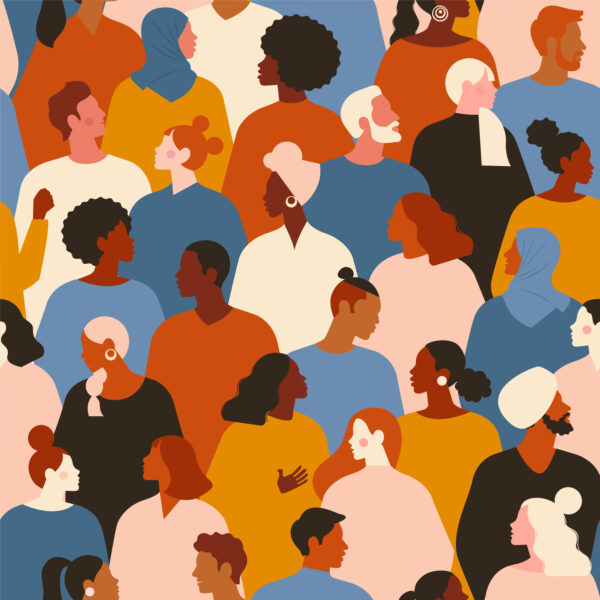
According to a new report from the National Academies of Sciences, Engineering, and Medicine, the United States has made little progress in the last twenty years in closing gaps that remain in healthcare equity. Racial and ethnic lines continue to be drawn in the quality and availability of care in this country, despite the United States spending the most on healthcare among developed nations. These disparities begin at birth.
Earlier this year, The Lancet Child & Adolescent Health Journal posted findings from scientists at Northwestern University, Ann & Robert H. Lurie Children’s Hospital of Chicago, and several other institutions that found that the quality of healthcare received by racial and ethnic minorities in the United States was almost universally inferior compared to White children. This included neonatal and primary care, as well as emergency medicine and surgery.
These trends continue through adult life. Analysis of the KFF’s 2023 Survey on Racism, Discrimination and Health reveals a life expectancy for Black Americans that is nearly five years shorter (72.8 compared to 77.5 years) than their White counterparts. It also documents that Black women are nearly three times more likely to die due to pregnancy-related issues.
Overt racism and discrimination alone cannot account for the level of disparity that exists in today’s healthcare, rather, it is a systemic and cyclical lack of resources dedicated to educating, nourishing, and treating populations that need these services most. A bevy of socioeconomic factors contribute to this vast disparity in healthcare for different races and ethnicities. Provider bias certainly cannot be ignored, but there are other facets to this issue that exist beneath the surface.
By and large, these underserved communities suffer from higher uninsured rates and are, therefore, less likely to seek care when needed or enjoy accessible and affordable preventative medicine. These populations also do not enjoy the same level of access to health education and proper nutrition that more affluent communities take for granted. How can we break this cycle and ensure that all people, regardless of race, religion, or ethnicity, have equal accessibility?
Innovative solutions in medicine in fields such as telehealth have widely increased healthcare accessibility throughout the country and around the world. As doctors and nurses are able to provide more comprehensive treatments and care to more and more patients, the demand on the time and resources of our healthcare professionals is significantly reduced. This puts us on a path toward a more streamlined, optimized, and efficient healthcare system capable of providing more affordable care. While these developments are desperately needed to address issues that exist on a patient-doctor level, we also need initiatives aimed at going to the root cause of many of these health disparities.
Health is not a mere matter of medicine and the means to access it. Health is also a matter of proper nutrition and fitness and the understanding of one’s own personal wellness. Large sections of people in America are still woefully uninformed about the transformative power that even something as simple as diet and exercise can have on individual health and medical outcomes. People who eat better and live cleaner are far more likely to live healthier lives than those who do not. While this sentiment seems simple enough, access to good food and fitness education among all members of society remains one of the largest contributing factors to many of the health disparities affecting us today.
It is through the expansion of education through our communities that we can equip individuals with the knowledge to manage their own health and well-being better and empower them to take a more hands-on approach to wellness. Through community engagement, the root causes of healthcare disparities can be addressed, and the health and resiliency of individuals can be dramatically improved. By developing partnerships that can further propel health initiatives, health and wellness advocates can help reduce the frequency of preventable diseases and foster healthier habits and behaviors among at-risk communities.
Through collaborative efforts between healthcare providers and active community members, we can soon see the erasure of these lines that have long existed in this country. Health disparities that have a longstanding and deeply rooted history that stem from structural and systemic discrimination can be addressed through advancing medical innovations as well as grassroots community programs and initiatives aimed at increasing health and wellness education among disadvantaged and underserved populations. As people of color begin to enjoy the same access to healthcare, proper nutrition, and personal wellness education, we will see a dramatic shift in the health outcomes of these populations.
Photo: Angelina Bambina, Getty Images
Dr. Bill Releford, affectionately known as "The Doctor and The Farmer," is the Founder, President, and CEO of The Wound Pros. A visionary in healthcare, Dr. Releford blends advanced medical practices with sustainable agricultural insights to enhance the well-being of patients and communities. As the leader of The Wound Pros, a top wound care service, he is committed to health equity and harnesses AI-driven solutions to transform lives globally. His initiative, Wound Care Without Walls (WCWW), extends advanced wound care to millions worldwide, addressing the debilitating effects of non-healing wounds and making a profound impact on global healthcare.
This post appears through the MedCity Influencers program. Anyone can publish their perspective on business and innovation in healthcare on MedCity News through MedCity Influencers. Click here to find out how.











